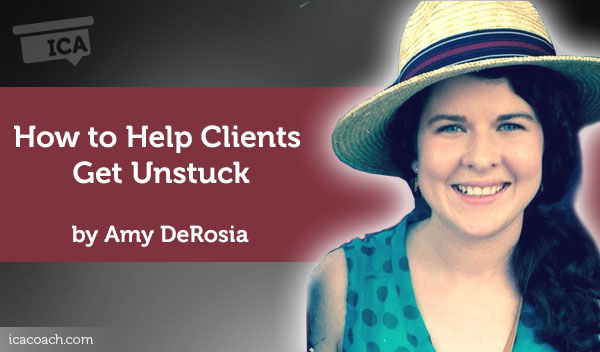
Coaching Case Study By Amy DeRosia
(Life Coach, UNITED STATES)
And the day came when the risk to remain tight in a bud was more painful than the risk it took to blossom.— Anais Nin
The desire to change is the result of discomfort or restlessness. This is true for our clients, coaching practices, personal lives, and society in general.
We don’t always know where to start when something we want to achieve doesn’t happen easily. Most of us have a plan that should lead us to success as long as everything goes as planned. But our rigid checklists don’t create space for unexpected obstacles.
Sometimes we ignore the problem and hope it will simply go away. Other times we take the same actions hoping for different results. We blame hardships on external circumstances, but this focus keeps us from seeing potential solutions.
One of the biggest challenges we face is helping our clients realize they already have everything they need to achieve their goals. If they are willing to persevere and learn from their mistakes, they can achieve almost anything they want.
The trick is to learn how to focus exclusively on what we do have control over. By learning how to change our perspectives in uncomfortable situations, we develop the resilience to handle the challenges of growth with less discomfort.
According to Dr. Carol Dweck, there are two types of mindsets -fixed and growth. All of us have a little of each one.
When you have a fixed mindset about an issue, you believe situations are how they will always be. You cannot change them. You’re smart or dumb; talented or not; a winner or a loser.
A growth mindset is about believing you can improve. Circumstances are malleable. There is expansiveness about this viewpoint. Failure isn’t so personal. You’re able to focus on behaviors you have control over.
Growth Mindset: People believe…their talents and abilities can be developed through passion, education, and persistence. For them…it’s about a commitment to learning-taking informed risks and learning from the results, surrounding yourself with people who will challenge you to grow, looking frankly at your deficiencies and seeking to remedy them.— Carol Dweck
Little improvements add up overtime. When you choose to see the potential in every situation and take consistent action, success is inevitable.
One of the easiest ways to help ourselves and clients continue making progress toward a goal is to pay attention to bright spots.
To pursue bright spots is to ask the question, ‘What’s working, and how do we do more of it?’ Yet, in the real world, this obvious question is almost never asked. Instead, the question we ask is more problem focused: “What is broken, and how do we fix it?’— Chip and Dan Heath
Getting unstuck is much easier when you focus on what is working and consistently take action. Coaching sessions give us the perfect opportunity to hold this kind of space for our clients, they have the space to uncover possibilities and solutions for themselves and test them.
Change rarely happens overnight, but becoming an expert at the process is just as important as achieving a specific goal. When clients become more resilient and confident in their ability to handle challenges, true coaching has taken place.